Telling the Bit story: Celebrating 10 Years of Composability
For over a decade, we've pioneered composable architecture, empowering developers and organizations to build software effectively at scale. We've worked alongside a diverse range of customers, guiding them through the adoption of composability for various use cases.
We experienced firsthand the challenges of unlocking composability's full potential and over the years distilled our experience and learnings into a comprehensive, practical solution.
After ten years of refinement, we're excited to tell our story and introduce Harmony, a solution designed to make composable architecture accessible to everyone.
It started with a vision
Like every other tech team, it all began with a dream. We envisioned a platform that would help people achieve great things. With a small passionate team of engineers, product manager, and designer by our side, we set off to make that dream a reality.
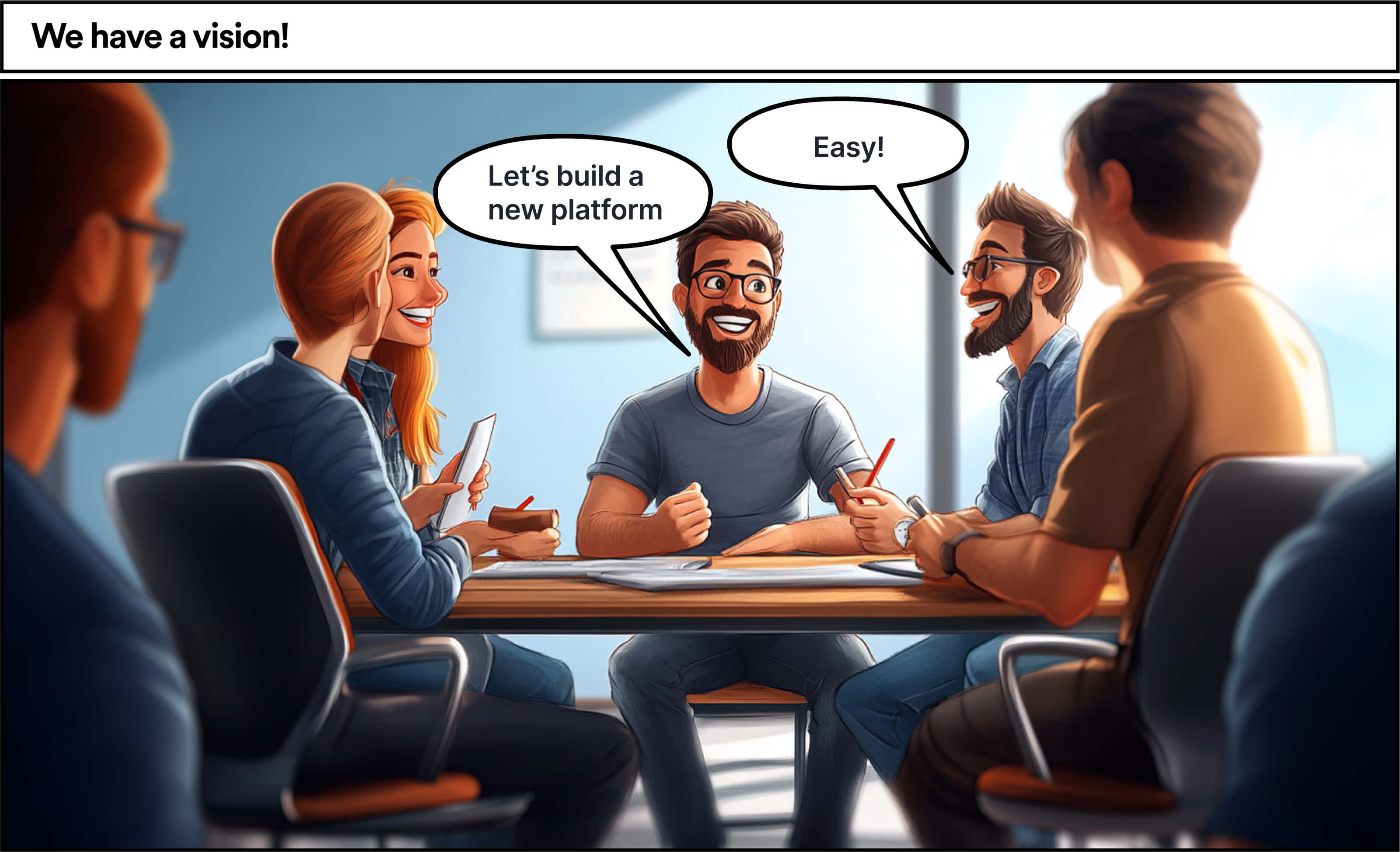
For a time, everything went smoothly
Things started off incredibly well. We quickly established a working platform with backend and a frontend application. We were excited about this initial progress, but also knew that the real challenge, and the greatest rewards lay ahead.
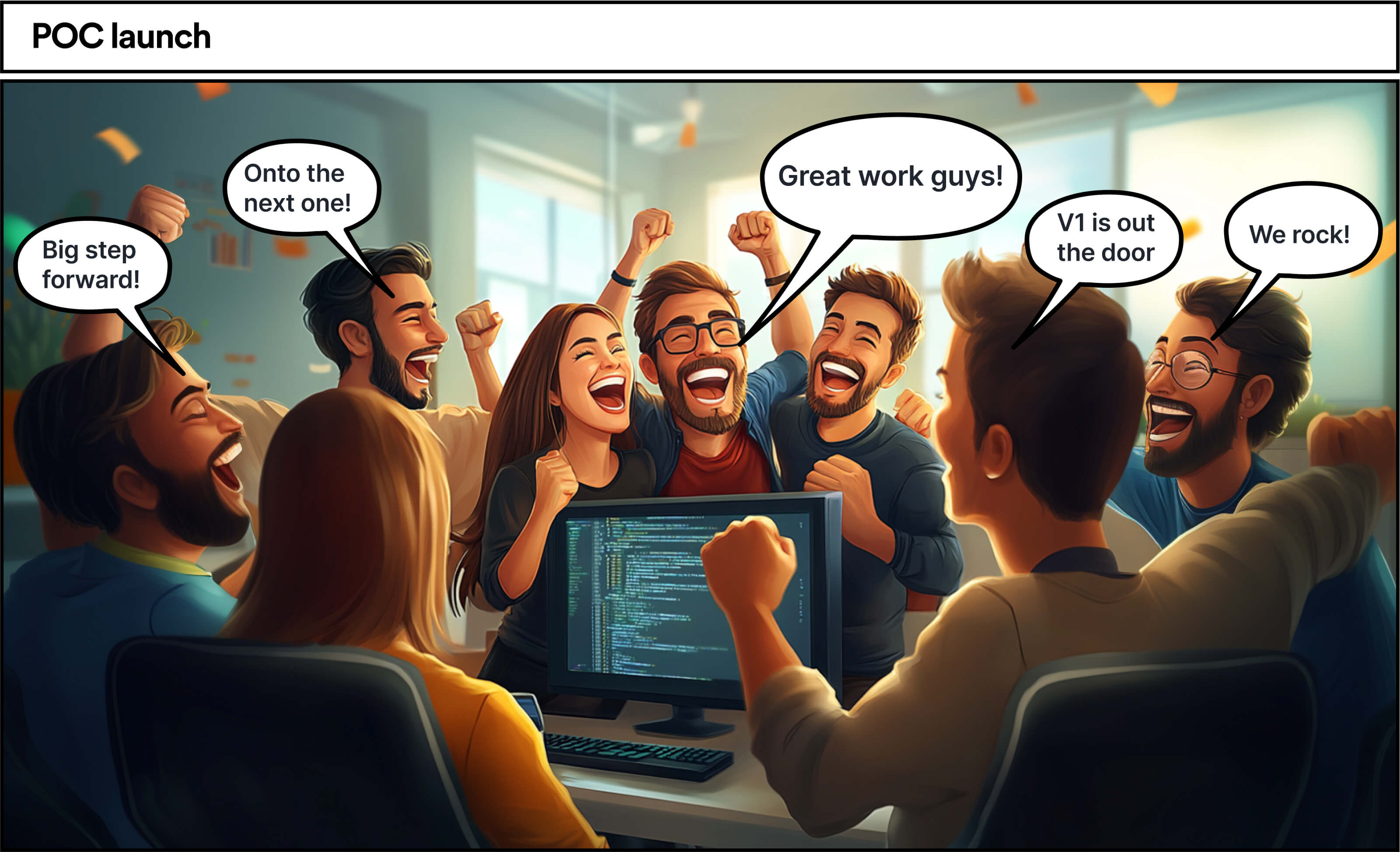
Facing the challenges of integrating diverse interfaces: a local application, a web UI, and a backend. We recognized the critical need for code reusability and maintainability and chose a micro service architecture, reusable components and a frontend application.
Hitting a Wall
Changes to our platform became increasingly risky due to the complexity of our decentralized architecture. Even simple changes often triggered cascading updates across multiple services and applications, impacting platform stability. This lack of visibility into dependencies made it difficult to predict the consequences of changes.
Maintaining 30+ services became a burden. Our monolithic frontend app, hampered by its architecture, resisted growth. New features demanded complex coordination, sometimes to the point of impossibility. Certain bugs proved intractable, and the inherent complexity of our architecture limited our scaling potential.
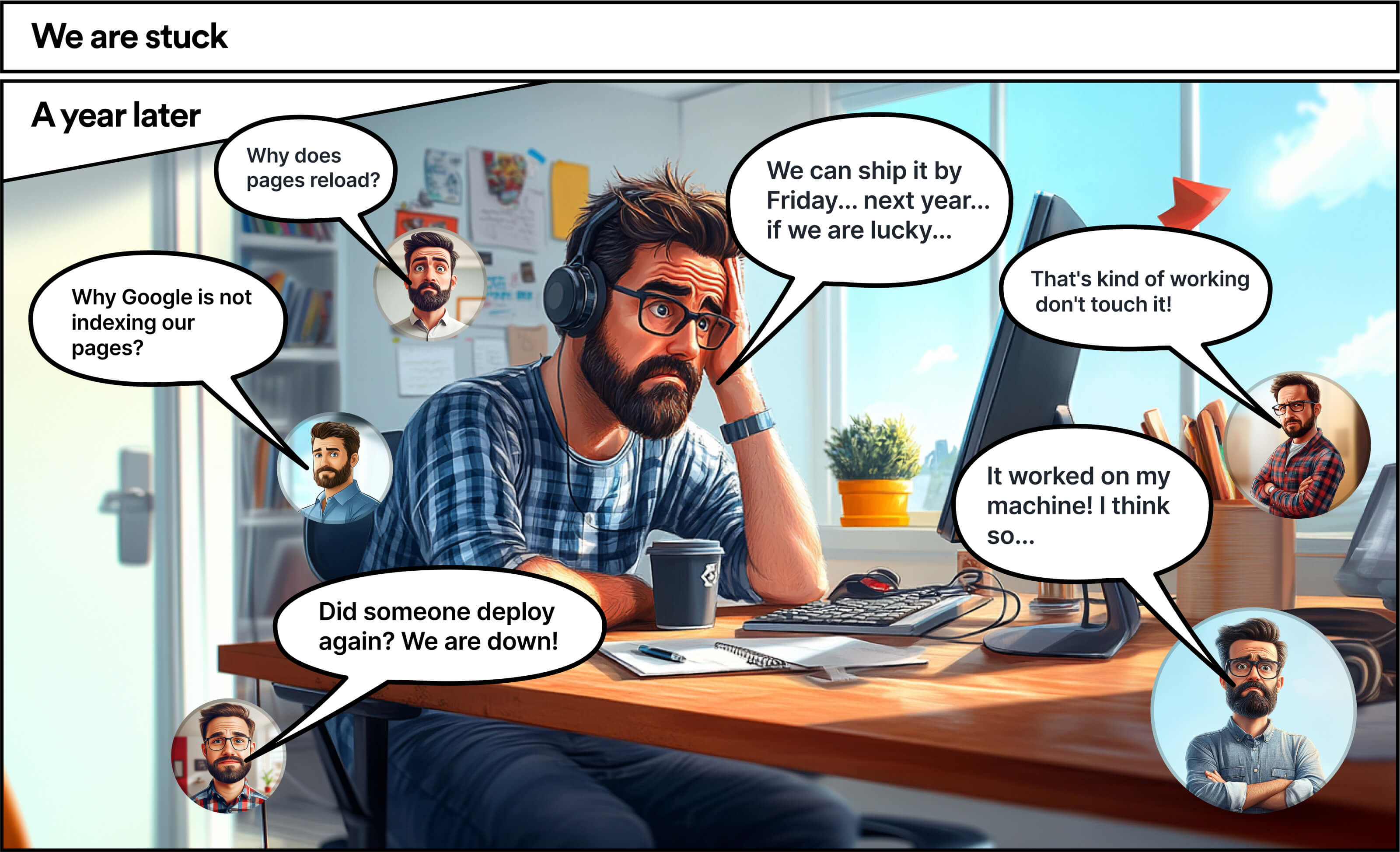
Our software had become a collection of disconnected fragments, limiting our ability to deliver new features and make changes. The long feedback loops, complex deployments, performance challenges, and dependency hell significantly limited our ability to deliver value quickly and effectively.
Harmony
Harmony has provided the missing link: the ability to compose our business features into unified platforms, offering the simplicity of building a single app while retaining the benefits of a distributed system. This enables monolithic simplicity and performance while retaining scalability and developer autonomy. Read more about how Harmony works here.
With the adoption of Harmony, instead of wrestling with microservices, we focused on delivering value, composing a unified platform without the integration headaches. Our journey finally pivoted towards the path of success.
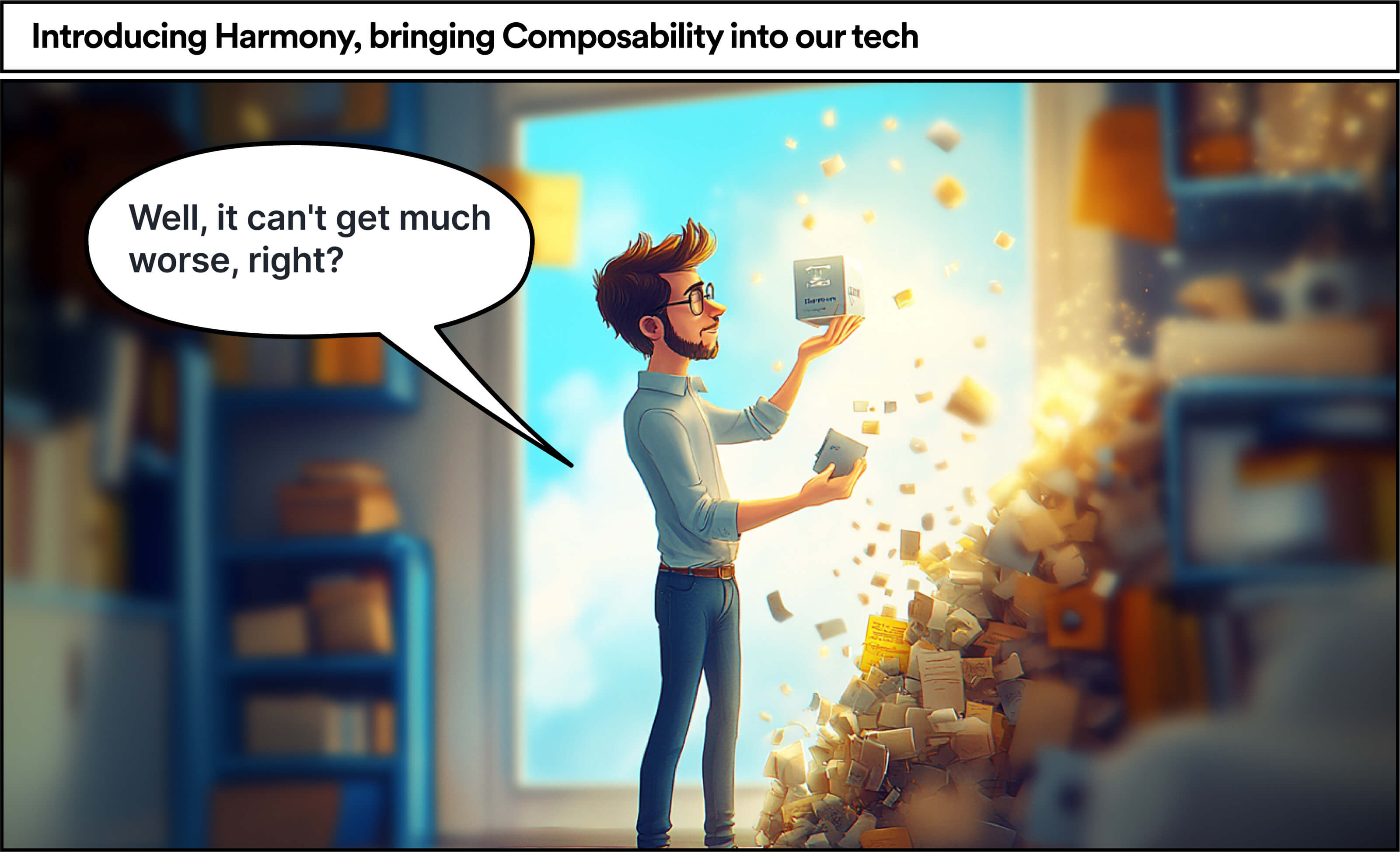
To minimize disruption and maintain continuous delivery while adopting Harmony, we chose a gradual approach. This allows you to build new features with Harmony while leveraging our 100% of existing codebase. Our Harmony adoption strategy involved:
- Adopt composability for new features.
- Minimize our core and leverage extensibility.
- Leverage 100% of our legacy code in the process.
Composability
Composable architecture has unified our business vision and technical execution. It provides a shared language and single source of truth for discussing architecture and addressing critical challenges.
By decoupling production from our organization structure has allowed developers to operate independently, experiment with new technologies, and deploy changes more frequently without compromising the stability or performance of the production environment.
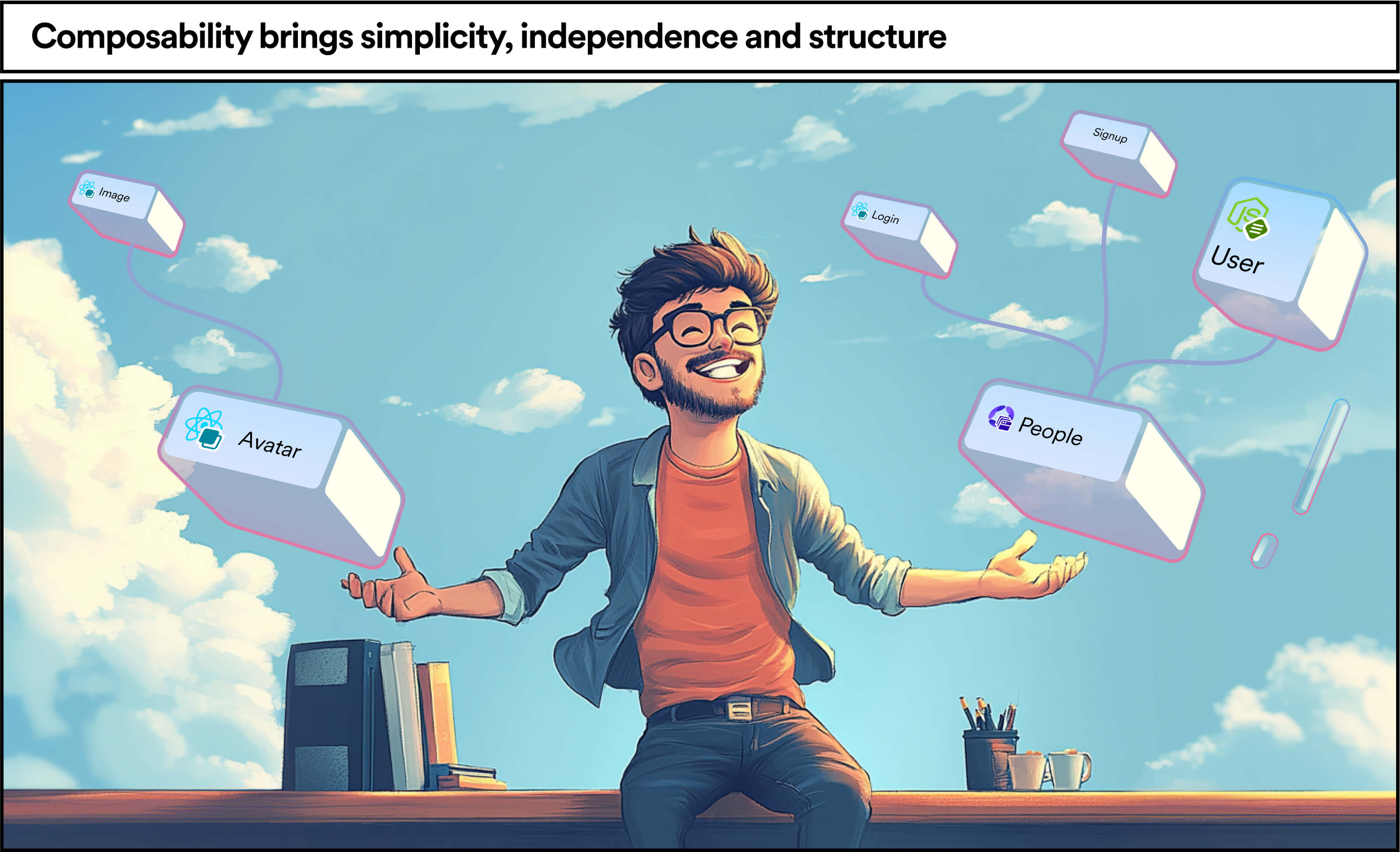
It empowered us to build features without barriers. With this approach, we eliminated dependencies, shortened feedback loops, enabling developers to make changes confidently, without the risk of breaking existing functionality. We started making tangible progress.
Exponential progress
Introducing new developers to Harmony enabled scaling by allowing them to work effectively on isolated, low-context tasks using a growing amount of standard and high quality APIs. This efficient workflow fueled the exponential growth of our technology.
Today, Bit and Bit Cloud are assembled from over 320 business features, composing over 2,000 independent components. The technology we've built is not just vast, but impactful and includes radical innovations like Ripple CI, Cloud Workspaces, and Hope AI showcase our commitment to quality and delivering cutting-edge solutions for building and maintaining composable software."
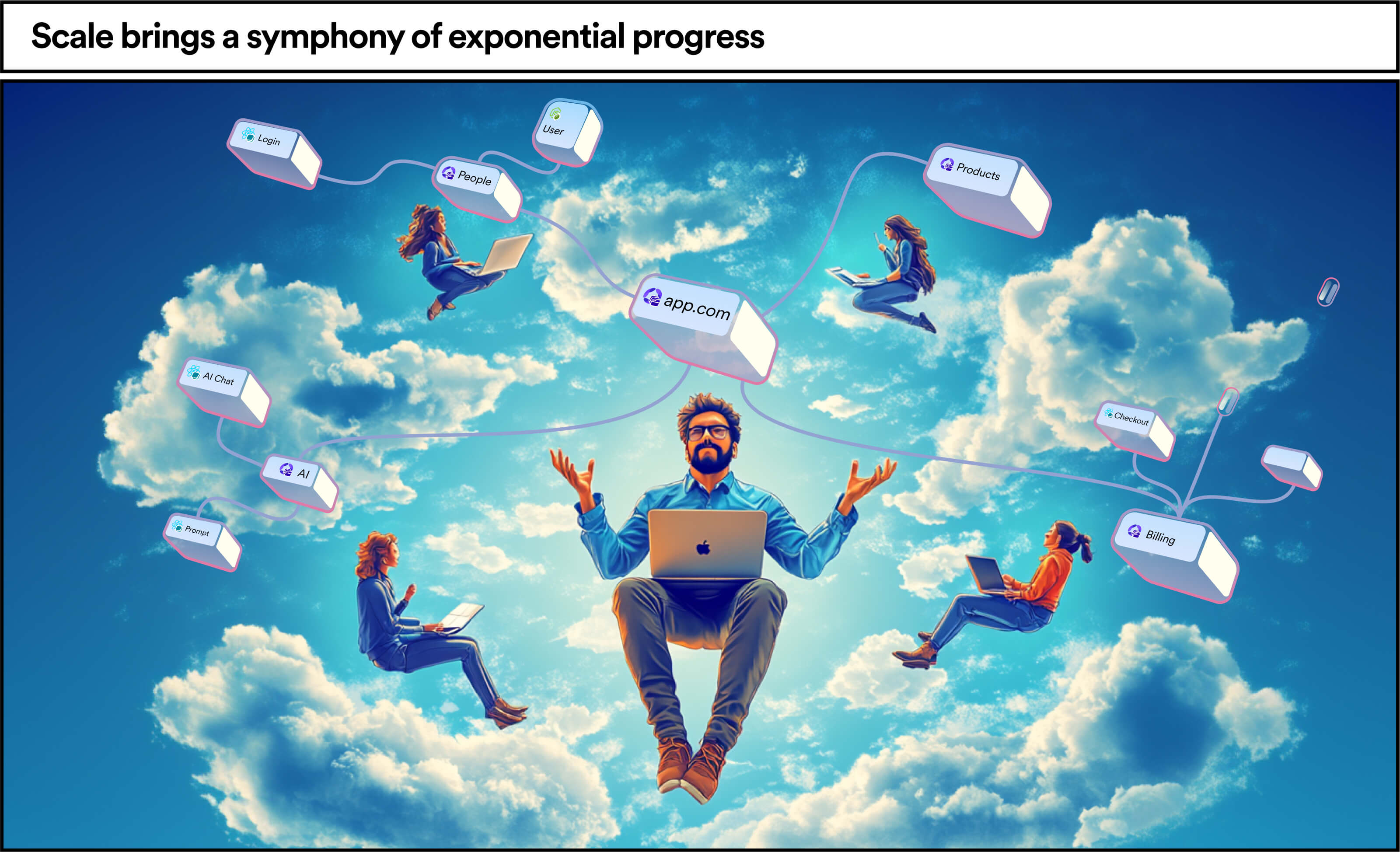
Empowering teams with independence through composability significantly accelerated our innovation. By removing dependencies and bottlenecks, we've increased our deployment frequency to every 3 hours and reduced time-to-market for new features to ~9 hours. This allows us to respond rapidly to market changes while ensuring system stability and optimal performance.
We've established an ever growing arsenal of components and APIs that allows our team to punch above its weight. People are consistently surprised by our velocity and the breadth of tech we maintain — which is the ultimate testament to the power of composability.
What the future holds for Composability?
Stay tuned for Hope AI announcements.
Godspeed,
Ran Mizrahi
Founder and CEO of Bit
